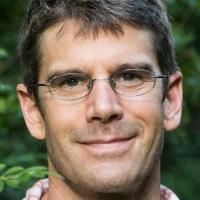Nonparametric Bayes Conditional Distribution Modeling With Variable Selection.
Date
2009-12-01
Authors
Journal Title
Journal ISSN
Volume Title
Repository Usage Stats
views
downloads
Citation Stats
Attention Stats
Abstract
This article considers a methodology for flexibly characterizing the relationship between a response and multiple predictors. Goals are (1) to estimate the conditional response distribution addressing the distributional changes across the predictor space, and (2) to identify important predictors for the response distribution change both within local regions and globally. We first introduce the probit stick-breaking process (PSBP) as a prior for an uncountable collection of predictor-dependent random distributions and propose a PSBP mixture (PSBPM) of normal regressions for modeling the conditional distributions. A global variable selection structure is incorporated to discard unimportant predictors, while allowing estimation of posterior inclusion probabilities. Local variable selection is conducted relying on the conditional distribution estimates at different predictor points. An efficient stochastic search sampling algorithm is proposed for posterior computation. The methods are illustrated through simulation and applied to an epidemiologic study.
Type
Department
Description
Provenance
Citation
Permalink
Published Version (Please cite this version)
Publication Info
Chung, Yeonseung, and David B Dunson (2009). Nonparametric Bayes Conditional Distribution Modeling With Variable Selection. J Am Stat Assoc, 104(488). pp. 1646–1660. 10.1198/jasa.2009.tm08302 Retrieved from https://hdl.handle.net/10161/4398.
This is constructed from limited available data and may be imprecise. To cite this article, please review & use the official citation provided by the journal.
Collections
Scholars@Duke

David B. Dunson
My research focuses on developing new tools for probabilistic learning from complex data - methods development is directly motivated by challenging applications in ecology/biodiversity, neuroscience, environmental health, criminal justice/fairness, and more. We seek to develop new modeling frameworks, algorithms and corresponding code that can be used routinely by scientists and decision makers. We are also interested in new inference framework and in studying theoretical properties of methods we develop.
Some highlight application areas:
(1) Modeling of biological communities and biodiversity - we are considering global data on fungi, insects, birds and animals including DNA sequences, images, audio, etc. Data contain large numbers of species unknown to science and we would like to learn about these new species, community network structure, and the impact of environmental change and climate.
(2) Brain connectomics - based on high resolution imaging data of the human brain, we are seeking to developing new statistical and machine learning models for relating brain networks to human traits and diseases.
(3) Environmental health & mixtures - we are building tools for relating chemical and other exposures (air pollution etc) to human health outcomes, accounting for spatial dependence in both exposures and disease. This includes an emphasis on infectious disease modeling, such as COVID-19.
Some statistical areas that play a prominent role in our methods development include models for low-dimensional structure in data (latent factors, clustering, geometric and manifold learning), flexible/nonparametric models (neural networks, Gaussian/spatial processes, other stochastic processes), Bayesian inference frameworks, efficient sampling and analytic approximation algorithms, and models for "object data" (trees, networks, images, spatial processes, etc).
Unless otherwise indicated, scholarly articles published by Duke faculty members are made available here with a CC-BY-NC (Creative Commons Attribution Non-Commercial) license, as enabled by the Duke Open Access Policy. If you wish to use the materials in ways not already permitted under CC-BY-NC, please consult the copyright owner. Other materials are made available here through the author’s grant of a non-exclusive license to make their work openly accessible.
